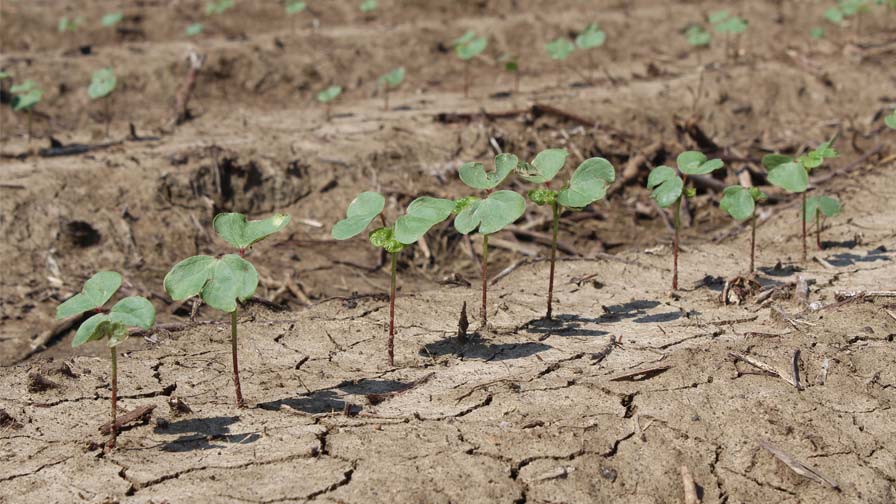FAO, ICAC Release World Apparel Fiber Consumption Results
The International Cotton Advisory Committee (ICAC) and Food and Agriculture Organization (FAO) of the United Nations have released the results of their World Apparel Fiber Consumption Survey for the years 2004-2008.
World fiber consumption has been steadily trending up over several decades. Per capita consumption was about 3.7 kg in 1950 and climbed to 10.4 kg in 2008. Given the nature of the final products of fibers, clothing and textiles, fiber consumption is sensitive to the global economic situation.
The World Apparel Fiber Consumption Survey during 2004-2008, recently completed by the Economic and Social Development Department of the FAO of the United Nations and ICAC, revealed the latest developments in world fiber consumption.
Final products of fibers can be grouped into three major categories: clothing, textiles for home, and textiles for industrial uses. These final products respond differently to changes in income and prices, depending on whether they are consumed as necessary goods, luxury goods, or durable goods. Therefore, world total fiber consumption is exposed to the influence of global economic developments. Encompassing a 4.2 percent annual average growth of the world GDP from 2000-2007, per-capita world fiber consumption increased by nearly 35 percent, from 8.3 kg in 2000 to 11.1 kg in 2007.
However, the economic stagnation in developed countries in 2008 resulted in a reduced rate of GDP growth for the world (3 percent), and a 6.4 percent contraction in per-capita world fiber consumption, to 10.4 kg.
Furthermore, two important developments came about in 2008:
• First, per-capita fiber consumption in developed countries experienced a fall in excess of 8 percent, but developing countries witnessed a decline of less than 5 percent. Some developing countries–such as Ecuador, Indonesia, Paraguay, Pakistan and Vietnam–even saw their per-capita consumption increase slightly in 2008.
• Second, world cotton consumption dropped sharply, over 7 percent, but man-made fibers production declined by less than 5 percent.
Preliminary analysis suggests that world fiber consumption experienced a significant rebound from its 2008 decline. In 2009, man-made fiber production increased by 3.6 percent, reversing the loss of 2008, while natural fiber production continued to decline, although at a slower pace. As a result, world fiber consumption may have gone up slightly in 2009 compared with the previous year.
Developing countries led growth in consumption
Developed countries had been the major driver of growth in world fiber consumption over the past few decades. Over the most recent decade, however, per-capita consumption of fibers in developing countries increased at a much more rapid pace. Compared with 2004, per capita consumption of fibers in developing countries in 2007 increased by about 20 percent, but only by 8 percent in developed countries. By regions, far Eastern countries registered the highest growth, about 27 percent, largely due to China (Mainland), where per capita consumption of fibers increased by 50 percent between 2004 and 2007.
The increase in fiber consumption in developing countries has been largely met by man-made fibers. While total per capita fiber consumption increased by 20 percent, consumption of man-made fibers went up by 28 percent during 2004–2007. As a result, the share of man-made fibers in total fiber consumption in developing countries climbed from 56 percent in 2000 to 65 percent in 2008. The per-capita consumption of manmade fibers in developing countries increased from 2.8 kilograms in 2000 to 4.9 kilograms in 2008. In 2008, total cotton consumption in developed countries accounted for about 50 percent of world consumption with a per capita consumption of 9.5 kilograms, which was nearly 4 times the 2.4 kilograms consumed in developing countries.
Cotton continues to lose market share
While cotton and man-made fibers continued to dominate world fiber markets, cotton has been rapidly losing its market share. In 1990, natural fibers accounted for over 60 percent of global fiber consumption, while in 2000 that share declined to 45 percent, and fell further to 40 percent in 2008.
It has been hypothesized that natural fibers –and cotton in particular–would regain their market shares after the rapid and sustained economic growth observed in the most populous developing countries, such as China (Mainland) and India, over the last decade. However, while the total quantity of natural fiber consumption has trended upward in these countries, per capita consumption of cotton has experienced little increase. For instance, per capita consumption of natural fibers in China (Mainland) in 1996 amounted to 2.8 kilograms, and it remained essentially unchanged after 12 years of accelerated economic growth (9.5 percent annual GDP growth), at 3 kilograms. In 2008, the per capita consumption of cotton in China (Mainland) amounted to 2.5 kilograms, only 0.2 kilograms higher than in 1996. Our preliminary analyses suggest that limited land resources and competition with food crops put upward pressure on natural fiber prices and this induces substitution in the textile industry towards relatively cheaper man-made fibers. The rapid technological advances in the man-made fiber industry, in particular the cotton-like fibers, drove away demand for natural fibers. In fact, per capita consumption of cotton in developing countries only increased from 2.2 kilograms in 1996 to 2.4 kilograms in 2008, while per capita consumption of man-made fibers in developing countries increased from 2.3 kilograms to 4.9 kilograms over the same period.
Developed countries continued to be the major consumers of cotton with per-capita consumption at 9.5 kilograms in 2008, just slightly higher than the 9.2 kilograms registered in 2004. Such a small growth was considerably below the annual growth of 2 percent observed during 1996-2004. Per-capita consumption of man-made fibers in developed countries, on the contrary, experienced a slight decline between 2004 and 2008, from 12 kilograms to 11.8 kilograms.
At the world level, synthetic fibers consumption in 2009 amounted to 35.8 million tons, substantially exceeding the 23.3 million tons of cotton consumed in that year. Per capita consumption of synthetic fibers increased 21 percent between 2004 and 2009, while per capita consumption of cotton grew 11 percent during the same period.








